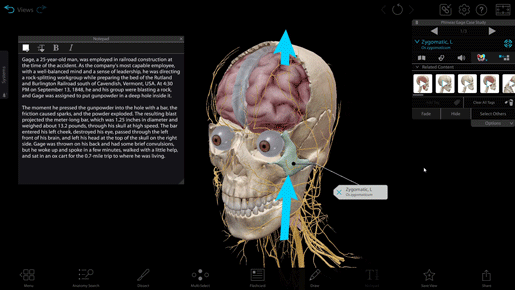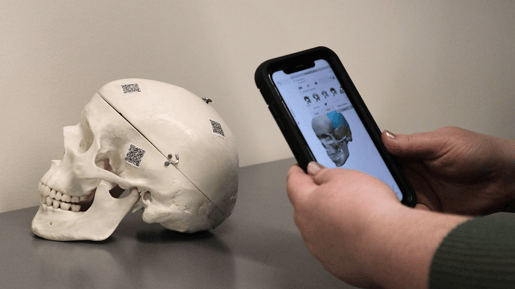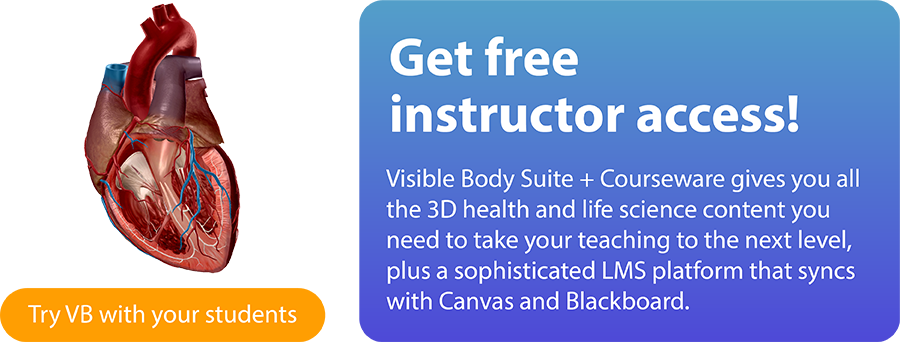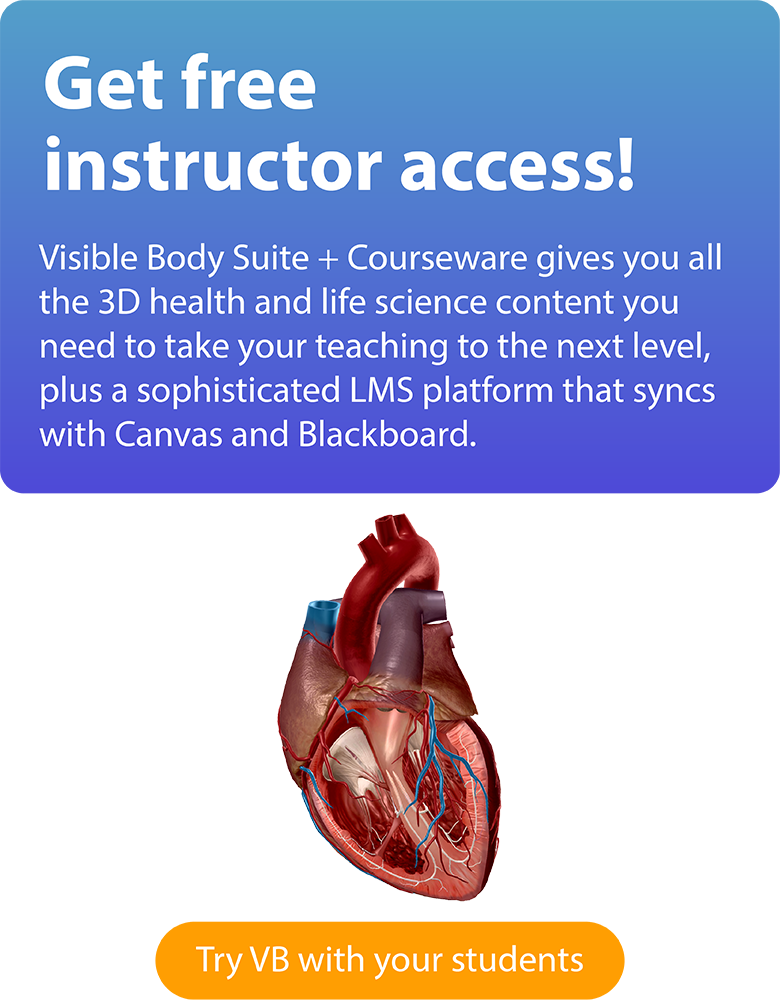Posted on 5/3/24 by Sarah Boudreau
High school forensic science classes are a great way for students to explore an interdisciplinary field while developing communication and teamwork skills. A simulated crime scene is the perfect way to put their investigative abilities to the test!
Simulated crime scenes are a popular activity in high school forensic science classrooms. Students love the role-play element as they pick up on clues and process the evidence, and teachers love giving students a hands-on experience.
In this blog post, we'll show you how to spruce up your virtual crime scene with Visible Body Suite’s 3D models! With its customization, sharing, and augmented reality features, VB Suite will help your students crack the case.

A Tour showing entry and exit wounds in VB Suite.
You can annotate VB Suite’s models to better match your case—with the app’s annotation tools, you can simulate everything from superficial injuries to organ damage.
The 3D Draw tool allows you to add drawings, shapes, and arrows in multiple colors.

The Draw and Notepad tools in VB Suite.
The Notepad allows you to add extra details about the scene, which can help students put the information into context. You can also use the Notepad to ask students questions or give them writing prompts unique to each piece of evidence.

The Notepad feature in VB Suite.
Once you’ve annotated your View, you can save it for later and share it via link or QR code.
If your classroom crime scene is styled like a scavenger hunt, you can place QR codes around the scene as “evidence” for the students to find. When students scan the QR codes, they’re brought to a corresponding view in the VB Suite mobile app, where they can manipulate the 3D model, view structure names and definitions, and get a fuller understanding of the anatomy at play.

QR code generated using VB Suite.
If you’re using a plastic model, CPR dummy, or mannequin as part of your crime scene, you can add an extra layer of interactivity by taping QR codes onto them.

QR codes generated using VB Suite.
No models? No problem! QR codes can help fill in the blanks. For example, add QR codes to a “chalk outline” to show key information.

QR codes generated using VB Suite.
You can learn more about using QR codes in the classroom in this blog post!
Augmented reality (AR) is one of the most fun features in VB Suite!
With the help of a QR code, have your students access a Gross Anatomy Lab (GAL) view. Switching to AR mode, students will point their mobile device camera at the crime scene and tap the yellow rectangle to place the model. With AR, your students can get active as they move around the “body.”

GAL view in AR in VB Suite.
AR is great for getting students hooked and interested in the content! They can then dive deeper into the case and explore the evidence.
How do you use VB Suite in your forensic science classroom? Tell us in the comments!


For more teaching inspiration, check out these blog posts:
Be sure to subscribe to the Visible Body Blog for more anatomy awesomeness!
Are you an instructor? We have award-winning 3D products and resources for your anatomy and physiology course! Learn more here.
When you select "Subscribe" you will start receiving our email newsletter. Use the links at the bottom of any email to manage the type of emails you receive or to unsubscribe. See our privacy policy for additional details.
©2026 Visible Body, a division of Cengage Learning